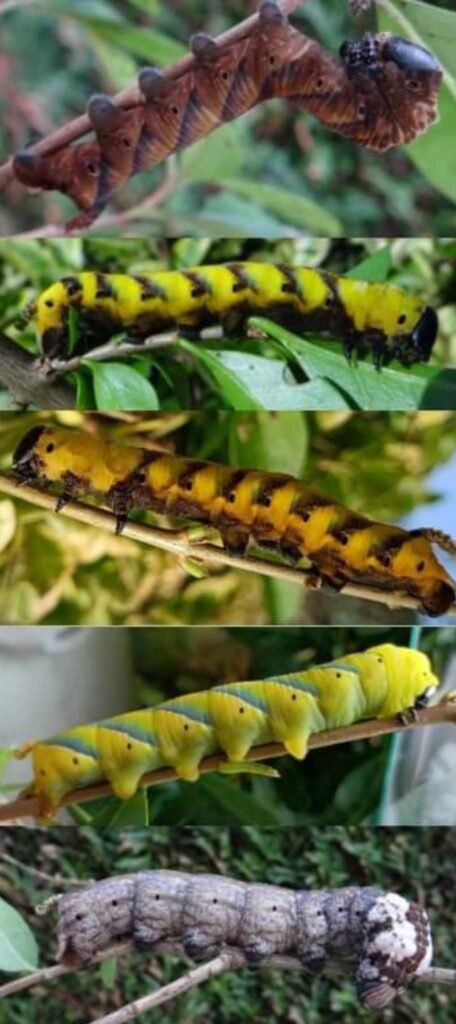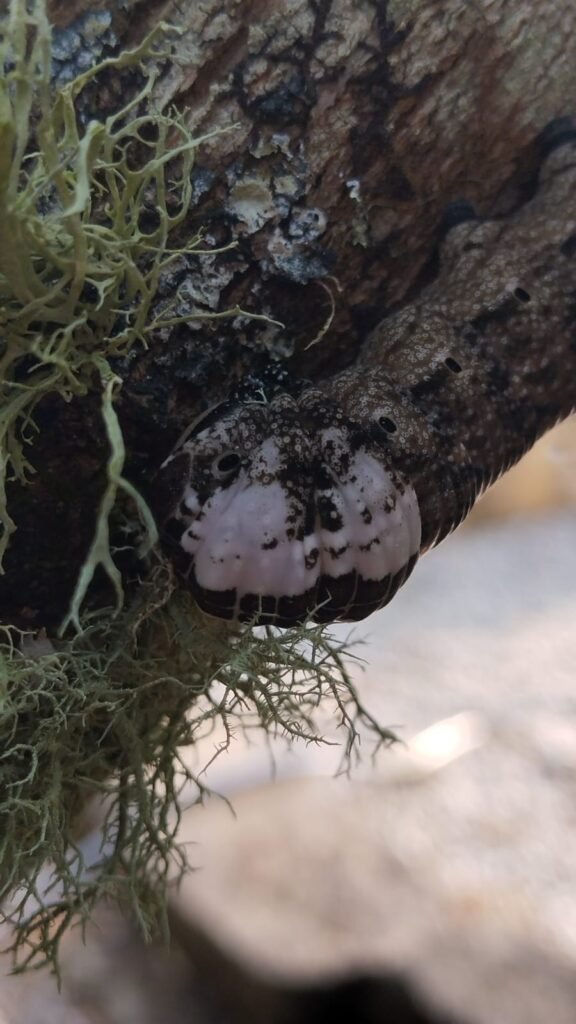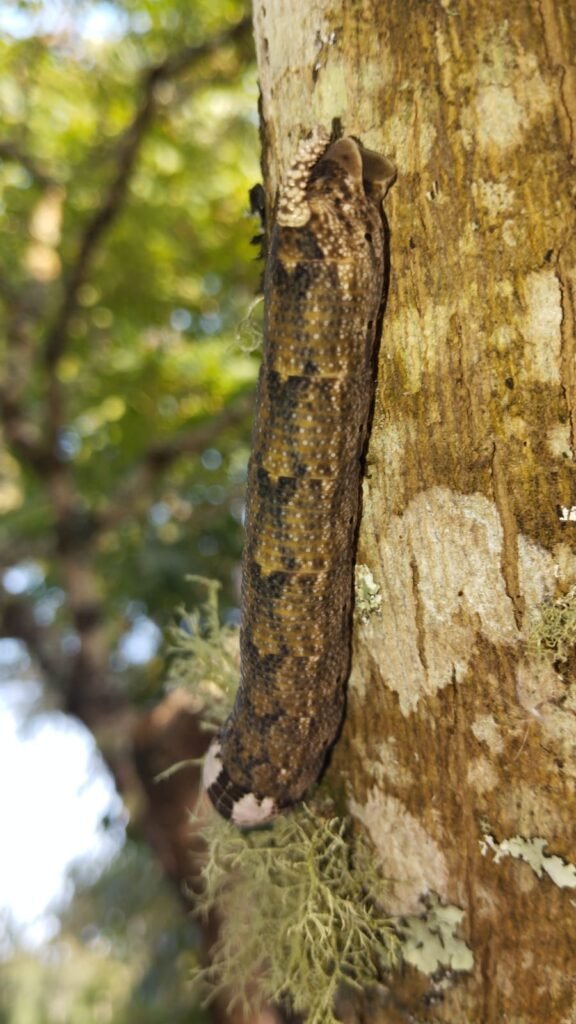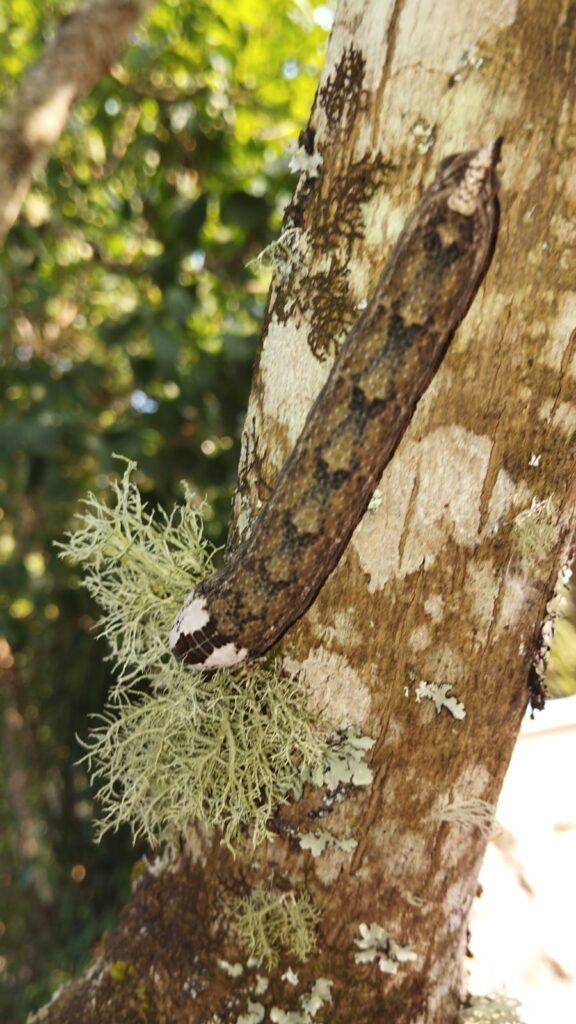(Linnaeus, 1758)
Occurrence: Africa, Europe, Middle East
Biotope:
Food plants: Ligustrum, Fraxinus, Solanum (solanum lycopersicum, solanum tuberosum)
Voltinism: Multivoltine.
Pupation: Caterpillars burrow underground and pupate.
Difficulty: Very easy to rear, suitable for beginners.
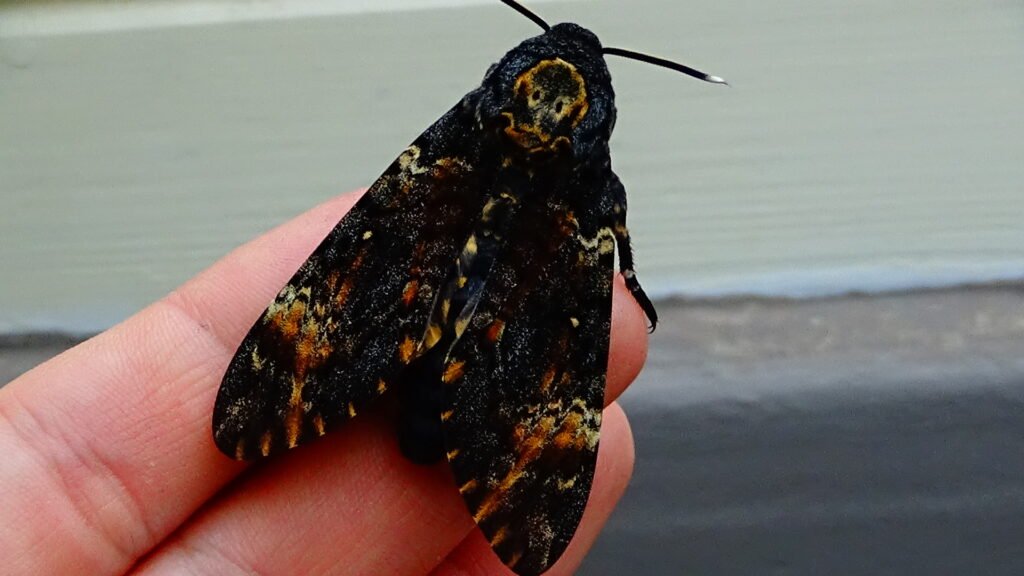
This beautiful species is probably one of the most notorious sphinghids. It comes from the genus Acherontia which is known by their skull marking on the thorax of the imago. Not all species from this genus have it, but Acherontia atropos is the most famous species from this genus and is well known for the skull. The rearing is very easy and very fast too. The caterpillar stage can only take 3 weeks and the moths emerge in 3-4 weeks. Of course all depends on the temperature, in high temperatures its very fast, in colder environments it can take longer. The caterpillars feed on many plants, during the winter the best option is ligustrum. In nature we can find them on fraxinus trees, or on Solanaceae plants. We can find them on potato or tomato fields. They can be a pest in some parts where they can ravage the fields of potatoes. Their life cycle is really interesting. The moths and caterpillars are beautiful and really interesting in their behavior. As mentioned the most noticabale feature on the moths is the skull, the shape and color can have several variations. The moths unlike saturniidae feed. Lot of sphinghidae species have a proboscis and feed. The imagos of acherontia atropos eat honey. In nature, they infiltrate bee hives and eat the honey straight from the bees, they are often killed by the bees themselves or by the bee keepers. The skull should actually represent a worker bee, they also make a squeaking sound, which should also be mimicking bees, thus helping them go unnoticed. In the past this moth was viewed as a sign of bad omen beacuse of the skull. You can also know this species from the movie Silence of the lambs. In captivity they can be fed a mixture of 50% water and 50% honey. Its best to start feeding them after 24-48 hours. The moths will not feed themselves, you need to extend their proboscis using some sort of a stick and place it inside the mixture. You can put it in a small cup or a bottle cap. After a while they might start feeding themselves and get used to the routine but some individuals will need to be fed by hand all the time. If you place them on a honey comb they will most likely always start feeding by themselves as it stimulates their natural behavior. Another interesting thing about this species are the caterpillars, they have variability of colors. The most common in captivity are green and yellow, the rarer one is a brown color which only appears in the last instar. There have been reported many other variations but they are very rare. Most likely you will always see these 3 colors, but there can be many other variations too, but they are not so common. The eggs hatch very fast, in about 10-14 days of time. The first 3 instars can be raised in plastic boxes. They need to be clean and dry. They also enjoy hot temperatures. Do not overcrowd them and always give them fresh food. In L2 i replaced the lid of the box with a mesh. In L3 you can place them in a small pop up cage, later in L4 place them in a bigger cage and there they can stay until they are ready to pupate. In the final instar they will eat huge amounts of food on daily basis. When the caterpillars become fully sized and decide to pupate, they will turn quite orange and start to wander around the bottom of the cage. These caterpillars can be placed into some dirt substrate or gardening substrate without any added fertilizers or chemicals. They will burrow and pupate. Be carefull not to put in too many of them together for pupation, they can disturb each other and wont pupate and keep wondering. You can fill up a plastic box that is big and deep with the substrate and let them burrow there, only a couple per box. Cover the lid so caterpillars wont escape. Aftery they pupate you can dig them out, but make sure to wait long enough if you decide to do so, they need to harden after they shed their skin, if you touch them too early you can damage them.
L1- The small hatchlings are yellow in color, once they feed a little they become green. Their typical horn that most of the sphinghidae posses is black in color.
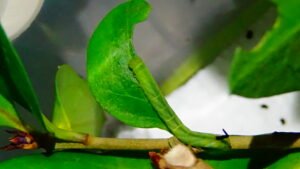
L2- The caterpillars become a bit more colorful. They are eating very well but will really start feeding a lot from L3 onwards
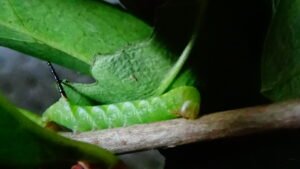
L3- The horn of the caterpillar becomes spiky. The body of the caterpillar has some colorful stripes on the ventral side. You can also notice black spiracles. They have green heads with black parts. The black parts almost look like their eyes, which makes them look very alien like.
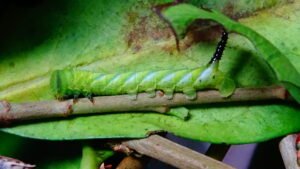
L4- The caterpillars become beautifuly colored in this stage. Their horns are no longer black but a golden or brown color. The caterpillars are overall yellow or green in color, they have black spiracles and a typical pattern of stripes for this species.

L5- The caterpillars look almost the same, the biggest diffrence is that in this stage the brown color can appear. They become gigantic in size and eat huge amounts of food on a daily basis. After eating a huge amount of food the caterpillars will soon pupate.
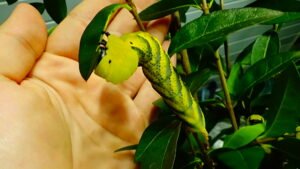
The puape can be easily incubated in a pop up cage. You can place tissue on the bottom of the cage or some other substrate like vermiculite or some other garden substrate that is dirt like. They need warmth and humidity. They hatch in about 3-4 weeks. Make sure to keep them really warm and humid, especially spray them before emerging. The pairings are quite easy, for them to pair they need to be fed on daily basis. Its best to leave them alone and do not disturb them as they pair. They will pair multiple times a day and in various positions. Sometimes the moths will pair only when they are a couple days old. A little airflow helps for them to pair too. Make sure its not too cold because they wont be active.
Some other interesting color forms documented by Jacques Roget:
